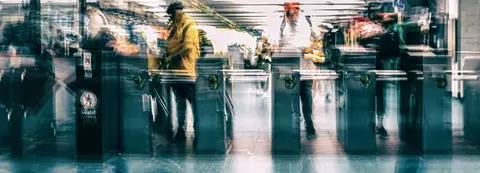Dear People of 2015,
As I sit here dictating this letter into my watch at 6pm on a Wednesday, I can see a sight with which you’d be quite familiar. The roads outside are busy – the difference you would notice, however, is that they just keep moving. And they’re very quiet – no horns, no rumble of internal combustion engines – they’ve all gone. These roads are full of driverless, fully automated electric cars – secure, safe and reliable.
A lot has changed over the last 35 years.
We knew back then that we needed to do something, although we were rather slow in actually getting on with it. That didn’t come until later. There were some great solutions and ideas and lots of people were talking about the future and all its bright possibilities. But concrete action was quite thin on the ground.
So why did we change? Because we had to.
We realized that the existing infrastructure we had was not going to cope for much longer and that we needed to act if the consequences were not to be economically damaging. The rise of the sharing economy enabled us to stretch that infrastructure further – using analyzed and predictive data, we were able to influence people’s behavior to use socially and economically acceptable combinations of modes. Autonomous vehicles and robotics were arguably the most disruptive and beneficial changes of all. They began to revolutionize lives for people in so many cities – the aged and infirm could be out and about, children could be dropped safely at school – the need to escort them from door to door now gone. But that rise in sharing travel combined with a rise in commercial vehicles from online shopping created a much more complicated job of managing that shared road-space.
Fortunately for all of us, our salvation came in a form that initially frightened us.
Disruptive services and technology began to overcome the objections of traditionalists, as more and more people realized the benefits of all these services. We began to see concierge services in transit taking delivery of shopping, more and more ride-pooling, smarter bikes and a more coordinated road-space as vehicles began to talk to infrastructure, each other and park themselves. We began to charge vehicles not based on how much fuel they burned but which roads they used and at what time of day.
We also began to change how we interfaced with transportation.
We went from interfacing with equipment like vending machines and kiosks, to mobile payments and location-based services, to ultimately digitized personal assistants that accompanied us and provided predictive services based on a very rich understanding of our habits and preferences. By all having a single travel account, people were able to yield data about their movements and received critical intelligence that enabled them to save time and cost, and the city to simply work better.
And what was it that brought about this change? Well, partly it was a growing acknowledgement on the part of cities and their leadership that they had to act. But it was also cleverly integrated systems that united data and payment so seamlessly – embodied in Cubic’s NextCity. NextCity is Cubic’s roadmap for this coordinated framework – centered around three core principles of integrated customer experience, one account and integrated operations and analytics.
So, how will we get to 2050?
- Firstly – everyone must commit to act now (as a society, as government and as an industry)… The problems will not get better with age and will certainly cost more to fix;
- Be bold and don’t try to define standards for everything – that is certain to stifle progress and will lead to endless wrangles driven by political agendas;
- Earn the right to people’s trust by treating their data with care and respect and giving them something valuable back in return;
- Avoid silos - integrating data, information and operations will be critical in the future; and
- Embrace disruption in technology and society – it is your friend…. the dam will burst anyway, so turn that revolution to your advantage.
A truly massive opportunity for social good exists if you’re bold in your thinking and decisive in your actions.
It’s going to be an exciting ride – good luck!
Megalopolis
Weds 14th March 2050
This blog post is a written response to the Ocotober 6 Meeting of the Minds #Dear2015 group blogging event, which prompts:
"The year is 2050. Write a letter to the people of 2015 describing what your city is like, and give them advice on the next 35 years."
Boris Karsch is vice president, strategy for Cubic Transportation Systems. He leads the execution of Cubic's NextCity vision for the integration of payment and information systems with direct responsibility for strategy development, partnerships and acquisitions.
Previously the capability development director for Cubic’s worldwide organization, Boris was responsible for Cubic's research and development programs including Cubic's Urban Insights data analytics capability. Boris brings over 15 years of experience in leading product strategy and development in electronic payments and transaction systems.
Boris has a bachelor’s degree in electrical engineering with Honors Class 1 from the University of New South Wales, Australia, and an MBA from the Australian Graduate School of Management.




